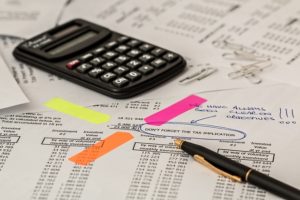 Accountancy is something that no business owner can avoid, no matter how small their business is, or how recently opened. Everywhere around the world, companies need to keep track of their investments, expenses and revenues, report on their earnings and calculate taxes based on these items. Of course, this does not mean that every business owner in the world is good at accountancy. They either hire a bookkeeper to help them keep their records in order, or sign up for an online accounting system which they can use to prepare mandatory statements and tax returns easily.
Accountancy is something that no business owner can avoid, no matter how small their business is, or how recently opened. Everywhere around the world, companies need to keep track of their investments, expenses and revenues, report on their earnings and calculate taxes based on these items. Of course, this does not mean that every business owner in the world is good at accountancy. They either hire a bookkeeper to help them keep their records in order, or sign up for an online accounting system which they can use to prepare mandatory statements and tax returns easily.
No matter which option you choose for your business, you must know what you are talking about when you look at the numbers and what they represent. Knowledge of basic accounting terms is a must, because you may be dealing with tax authorities with bank representatives who expect you to know them and give them clear answers to their questions.
Therefore, today we have decided to prepare a short glossary of the most important accounting terms you should know as a home-based business owner:
Assets – the assets represent all the equipment and inventories owned by your business which will continue to exist and be useful in running the business for the medium to long term. For example, printer paper is not an asset, but a consumable. The printer itself is an asset. It is important to know what assets are and how to protect them, because they may be seized by banks, tax authorities or by a court order in case you lose a lawsuit.
Accounts receivable – any amount of money you expect to be paid by your customers for supplied services or delivered products is an account receivable. These future revenues must be included in your balance sheet, starting with the date when you issue the invoice. They are recognized as actual revenues when you receive the payment.
Accounts payable – this term refers to any amount of money owed by your business, for example on utility bills or suppliers’ invoices. Just like the accounts receivable, they are recognized in the balance sheet as existing debt until you pay off the respective bills and invoices.
Balance sheet – this is a spreadsheet where you write down the revenues, expenses and equity of your business. In essence, the balance sheet gives a clear view of the financial situation of the business, whether it generates profits or losses.
Depreciation – every piece of equipment decreases its value over time, due to wear and tear and to the fact that its technology becomes obsolete as new products appear on the market. It is important to calculate depreciation for your long-term assets (machines and equipment which you use for more than one year) so that you can write them off on your tax returns.
Deduction – most of the expenses you accrue for setting up and operating your business can be deducted on your tax return. This means that the respective amount is subtracted from the tax amount you are supposed to pay. It is crucial to know how to take advantage of any legal deduction you can.
Equity – equity, or owner’s equity for businesses owned by one person (as is the case of the majority of home-based businesses), represents the amount of money you invested in your business, whether for registration purposes, legal fees, purchasing equipment, etc.
General Ledger – this is an accounting book where you have to keep track of every transaction done by your business during its existence. Every purchase you make, or payment you receive, every bill, fee, or tax you pay in relation to the business must be recorded in the general ledger.
Net Income – also known as profit or bottom line, it represents the difference between your revenues and your expenses. Once you have deducted all the taxes, expenditures, cost of loans, etc., the remaining amount is the net income.
Revenue – this term defines the money you receive in the course of doing business as payment for your products and services from your customers, as royalties, or other fees and commissions. This is not your profit, because you still have to deduct expenses and taxes from it.
